LOCATION: Glastonbury, Somerset
It was proposed to exploit a new peat working close to an existing isolated house on the Somerset Levels. Due to concerns of the impact of groundwater drawdown due to the workings on the house foundations, it was necessary to model what would occur in this process.
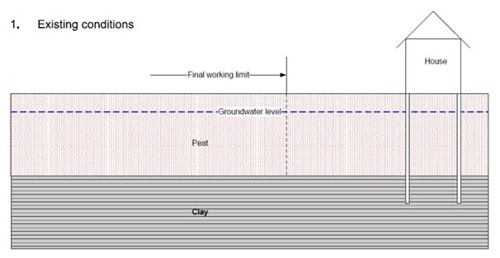
Fundamental to establishing this impact was determining the permeability of the peat. This was achieved by long term full scale pump tests.
The test set up, including control console and monitoring boreholes are shown in the graphic below:
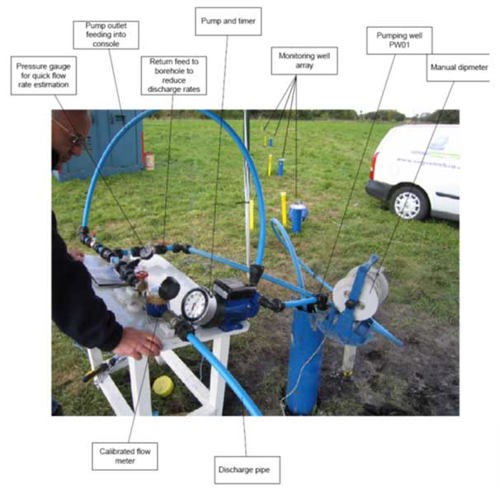
Graphical data was produced that could be read to establish permeability values by a number of different methods:
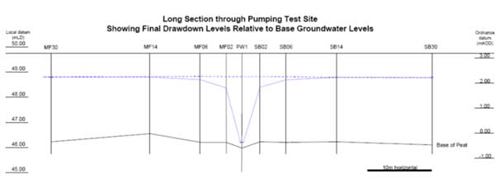
Methods of Analysis
Data from all the monitoring wells was analysed using the Thiem-Dupuit method given in Kruseman and de Ridder (2000). Classical equation given in all text books; Q = pk (h22 – h12)/ (ln (r2/ r1) or k = (2.3Q/ p (H22 – h12)) x log (r2/ r1)
Some were analysed using the Theis Analysis (BS5930, 28.3.2.2), which uses a plot of observation well drawdown compared or superimposed on a Theis 'type-curve’. Depending where the test curve falls on the type curve, parameters are read off the type curve, and substituted in equation to determine k.
The four nearest monitoring holes were also analysed using the Cooper-Jacob Time Drawdown Method (BS5930, 28.3.2.3). Using this method, the drawdown over a log cycle of time on a straight line portion of the graph is determined, and substituted into an equation to derive k.
The same method can be used plotting drawdown against log distance Cooper-Jacob Distance Drawdown Method from the well at a given time. Drawdown/ distance between the four nearest holes to the pump well were plotted to determine the unit drawdown value.
The recovery phase of PW01 and near wells was analysed using Theis’s Recovery Method (Kruseman and de Ridder, 2000, 13.1.3). A semi log plot of residual drawdown against time after pumping ceased is plotted, which gives a straight line, the slope of which = 2.30/ 4pKD
The recovery of PW01 after the step test was also analysed by this method.
Rising head permeability tests (BS 5930) were carried out in all of the boreholes put down as part of this exercise both to determine k, but more importantly to check uniformity of conditions across the site.
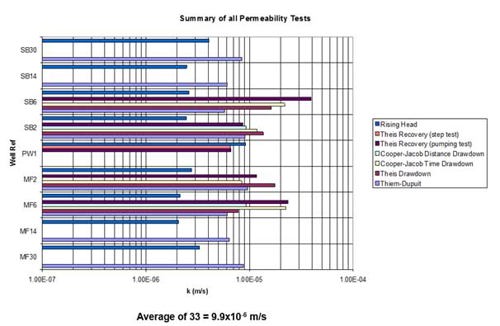
Once a characteristic permeability value was determined, the extent of drawdown could be accurately predicted, and modelled.
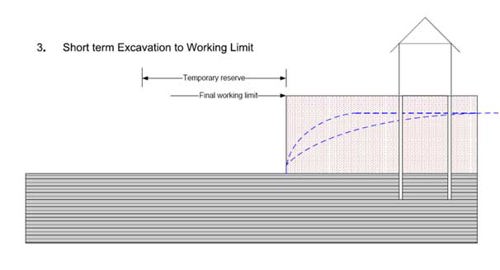
The testing demonstrated that the nearest property to the working would in fact remain unaffected, and this permitted the extraction to proceed safely.